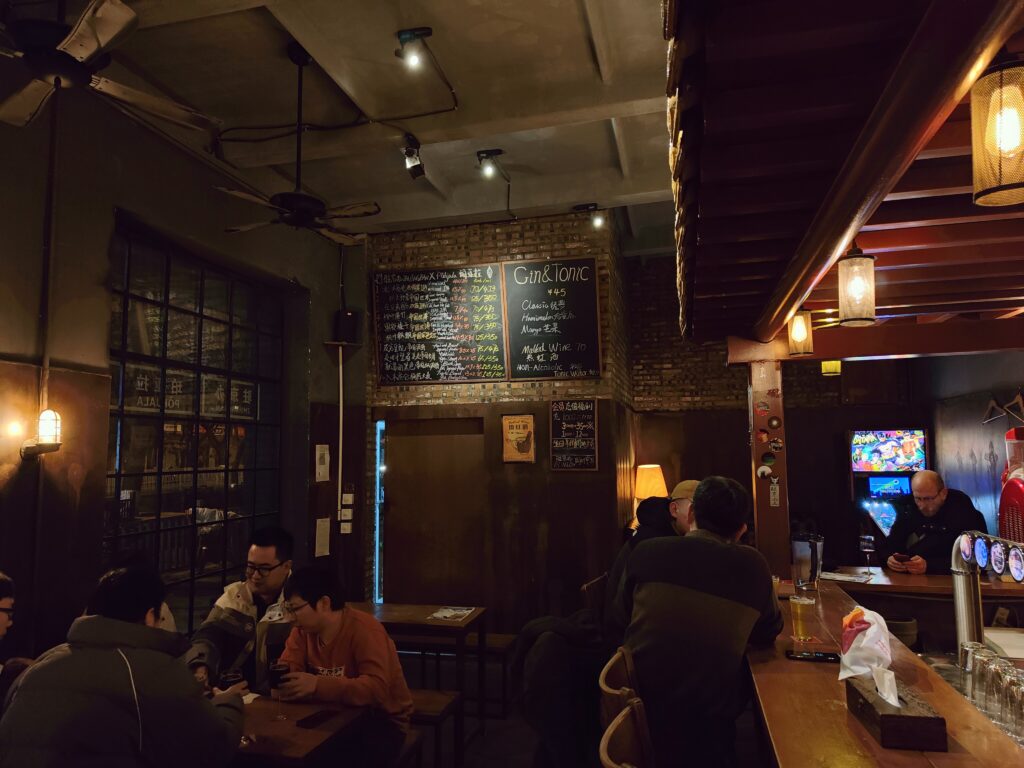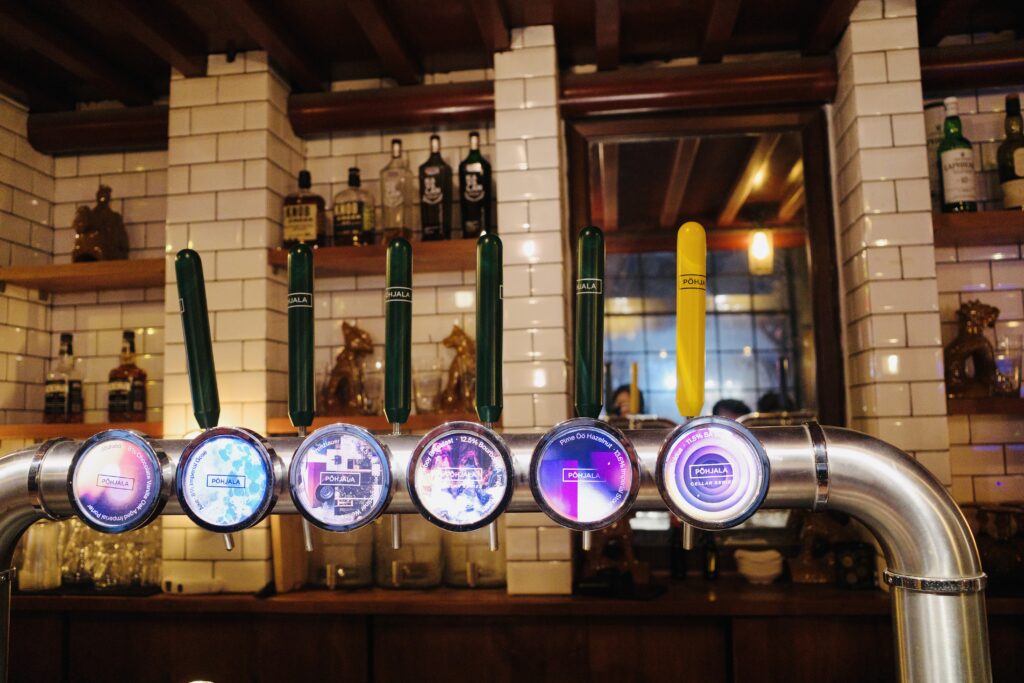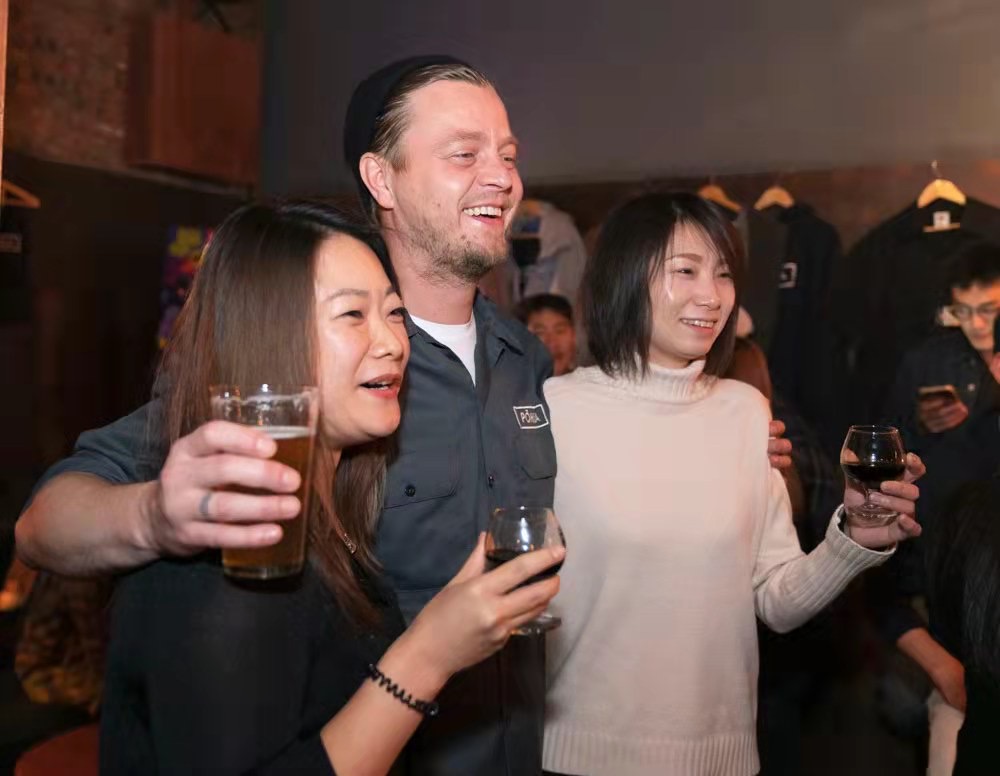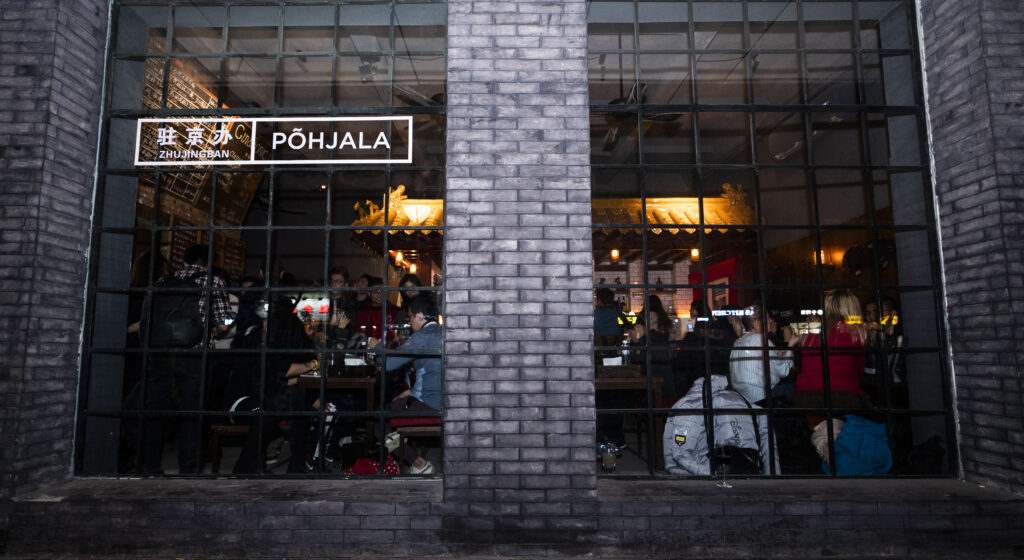Last month, Tallinn’s hometown brewing heroes, Põhjala, became the first brewery to be invited back for a second residency at the Beijing-based taproom Zhujingban, offering residents of China’s capital city a taste of Estonian mythology and culture.
In January 2022, Tallinn’s hometown brewing heroes, Põhjala, became the first brewery to be invited back for a second residency at the Beijing-based taproom Zhujingban, but, perhaps more importantly, because China’s borders have been closed for nearly two years due to Covid-19 travel restrictions, it’s a valuable opportunity for the Beijing beer enthusiasts to enjoy a bit of travel and cultural exchange with Estonia, if only by way of their tastebuds.
Põhjala’s origin story goes back to 2011 “when four Estonian friends got together and decided the tiny macrolager-obsessed country deserves some better beer”. With zero understanding of how to actually run a brewery, the guys traveled to Scotland and studied under the tutelage of Brewdog’s Chris Pilkington.
Following the end of their internship, Pilkington followed team Põhjala back to Estonia, and by 2013 they had their first beer, an Imperial Porter dubbed Öö – or Night. A year later they had established a “forest brewery” outside of Tallinn where they continued honing their craft before finally settling down in a 100-year-old repurposed submarine factory.
Zhujingban, meanwhile, was opened roughly three years ago by Zakaria Elmasri, a British expatriate who’s been living in Beijing for 15 years and co-owns two other bars in the city – Fang Bar and El Nido. While Fang Bar corners the cocktail market and El Nido is a stalwart of the imported craft beer bar scene, Zhujingban brought the city an entirely unique business model.

“When coming up with the concept, we saw that ‘pop-ups’ were the new trendy thing to do around venues across the city,” Elmasri tells Estonian World. “But, in reality, one to two-day pop-up collaborations often offer compromised quality. We thought by having a residency period, we would put in the preparation work beforehand to offer a premium service, one that had the pop-up novelty factor but was a real full-on educating and enlightening experience.”
The result is a cozy taproom in Beijing’s Andingmen/Gulou neighbourhood that hosts international breweries for a two-month residency. Committed to giving the guest brewery “an authentic home away from home feeling,” Zhujingban publishes a sleek magazine detailing the resident brewery’s origins and evolution, decorates the space with unique signage and carries exclusive merchandise and pint glasses, all of which helps customers “feel more connected to the brewery and the drinking experience it hopes to bring them”.
Põhjala and the Middle Kingdom
Several years ago, one of Põhjala’s founders Peeter Keek was on a pilgrimage through China, in search of the best craft bars across the country. While visiting one of their distributors, Keek was introduced to Elmasri and his business partner, Xiao Shuai. According to Oliver Ploom, Põhjala’s export manager, “they clicked very well with each other, and [Elmasri and Shuai] were really fond of our beers immediately”.
He adds, “These dark and full-flavoured beers were something quite unique for them and from that time, there were always Põhjala beers available in their bars.”
After becoming a fan favorite with locals as well, Elmasri and Shuai invited the brewery to be the fourth residency at their newly established Zhujingban, which lasted from 2019 October to December.

This was pre-pandemic, meaning Keek could travel back to Beijing and give Põhjala a fitting introduction. According to Elmasri, “part of the collaboration agreement was that the brewery would send out a head brewer/brewery owner or other high-up representative to give a talk about the beers, the brewery’s evolution and share some new experimental beers with those in attendance”.
Of course, because of the pandemic, none of this was possible for their current residency, so in lieu of sending someone to celebrate their second run at Zhujingban, Põhjala decided to collaborate with China-based brewery Maha Nine on a new beer.
“The beer was brewed in China, but we had many Zoom calls and shared the knowledge with each other,” says Ploom. “The goal was to find an ingredient that is common both in China and Estonia, and we found one! Sea buckthorn – growing very well both in Estonia and Inner Mongolia where Maha Nine [is located]. The beer style we made is a sour IPA and we called it Horizon.”
Estonia’s nature meets Beijing’s urban jungle
Given that Põhjala releases more than 25 new beers annually, they’re well-versed in a variety of styles. As Elmasri puts it, “they have a real strength in range”.
Nevertheless, their Zhujingban offerings are not for the faint of heart. The menu features boozy dark and sour brews that lean heavily on high-ABV imperial stouts and gose. This, however, is no accident – it’s a reflection of Estonia’s history and culture.

“Estonia has been historically a dark beer country for hundreds of years,” says Ploom. “People have been homebrewing long before any real breweries existed. Ingredients for this type of homebrew came from nature. As hops were not known at this time, the beers were called Gruit. It means that instead of hops, different herb mixtures were used for bittering and flavouring the beer.”
It wasn’t until the turn of the 19th century that hops and malts began making their way to the country from overseas, and more specifically, porters were being shipped from the UK. But when the Russian empire, which ruled Estonia at the time, capitulated to Napoleon’s ban on British exports as part of the Continental Blockade, the flow of porters to the country stopped.
Although there was still a demand, there could be no supply, and enterprising Baltic breweries began whipping up their own batches with local ingredients, resulting in the Baltic porter we know today.
Even though the style fell out of fashion for a while, Põhjala proudly made it a staple of their repertoire. “Põhjala was one of the first [breweries] who came out with a modernised touch of this style,” says Ploom. “And from this moment, our true passion lies in dark and bold beers as that’s what the cold and harsh [Estonian] weather suggests most of the time.”

Another of their specialties is the Forest Series, a line of brews sourced from locally foraged ingredients and folk medicinal recipes that harken back to the days of gruit. All of which is to say that Põhjala is much more than a craft brewer – it’s quintessentially Estonian heritage down to its name, Põhjala, which means “Northern land” or “Northern area,” with roots in Estonian and Finnish mythology.
“We feel that we are definitely laying ground on marketing Estonia as a country in general,” says Ploom. “I’m sure there are thousands of beer enthusiasts who have never even heard of this small country in the north part of Europe and whose first knowledge of Estonia has come from the Põhjala bottle or can.
“This is also a reason lots of our beers are inspired by local nature that is full of forests and beautiful places that you will not find in big metropoles. We want that people will get the taste of Estonia, take this magical moment with them, and imagine themselves to this mythical fairy tale place.”
Incidentally, that mythical fairy tale place is somewhere Chinese folks are apparently fond of visiting, as Põhjala was named one of the top 20 international breweries in a 2021 readers’ poll conducted by CiaoMrFu, an account that covers brewery and winery news on China’s leading social media platform, WeChat.

Aside from their strong cultural legacy, Põhjala had another reason for stocking Zhujingban with bold darks and sours – it’s more logistically feasible, especially when faced with shipping delays.
As Elmasri explains, “we were really booze heavy because of the slow turnaround on shipping due to the virus and Winter Olympics meaning half the beers were stuck in customs”.
Ploom elaborates that “we would like to present more light and hoppy beers as IPAs but they need to be very fresh when served and after several months of transport, the hops have a habit to fade. So this is also a complication that comes with countries far away – transport takes too much time. With dark and sour beers this problem will not occur, and we can provide the best quality possible.”
Nevertheless, now that some of those shipping delays have been resolved, Põhjala will be able to round out its residency with a wider selection.
“I have good news for all the Põhjala fans [in China] as the second part of the event will introduce the lighter variety of beers we make,” says Ploom. “A new shipment will arrive beginning of February and then they will also tap different IPAs and a lager.”

And with any luck, travel restrictions will lift sooner than later in China, allowing all those who have developed an affinity for Estonia through their Zhujingban sojourns to hop on a plane and enjoy some Põhjala fresh from the source.
“I hope more and more people are eager to find out about us and even visit us over here,” says Ploom. “In coming years, we wish to grow in China market significantly and get our products available to [an] even wider audience.”


I wonder what the Chinese will think if they see how Estonian World and ERR talk about their country and government.